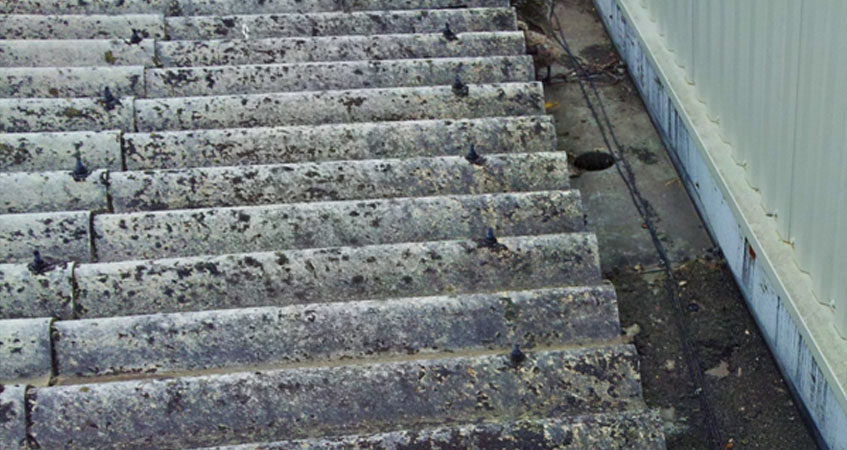The image illustrates the asbestos cement sheet against the new replacement galvanised steel sheets. As experienced roofing contractors, we can design a site programme to suit your working schedule and find an effective way to manage the works with minimal disruption. Contact Sage BEC today (formerly Sage Roofing).
Welcome to the second part of our asbestos related blog where we will be addressing what to look out for, whose responsibilities the management of asbestos is as well as the different categories of asbestos removal there are.
What to look out for
As mentioned in the first blog about the risks of asbestos, there are approximately three thousand asbestos containing products regularly used before the 21st century so knowing what to look for is incredibly difficult for the untrained eye. There is plenty of information available on the HSE website including where it can be found and examples of Asbestos Containing Materials (ACMs). If you believe there may be some form of ACM present in your building it is important that you don’t disturb or cause any type of damage in the suspected area. It is also vital to get an asbestos survey performed prior to any alteration works so that a full evaluation of the extent of potential exposure is understood. Following the survey, an appropriate contractor will be able to determine the scale of the works required, disruptions that may affect your business and what the best long term solutions are. It is not always essential to remove all of the asbestos, particularly if the product is in good condition and doesn’t pose any imminent threat to workers or inhabitants of the building. The asbestos survey will not only be able to identify the risks, but provides advice on the best methods of managing the asbestos containing products. The HSE provides a comprehensive asbestos survey guide as well as further information on available surveyors in various localities around the UK. It is advisable that you check out these resources and accrue as much information as possible prior to contacting a contractor to avoid causing any unnecessary risks to workmen.
Responsibility for the Control of Asbestos
Since the introduction of the ‘Control of Asbestos Regulation 20121, greater emphasis has been placed upon the duty-holder to ensure that any asbestos in their building(s) is correctly managed. The duty-holder is the owner of the premises or whoever is responsible for the maintenance or repair of the premises. It is therefore their obligation to determine whether there is any asbestos on the premises. If in doubt then you must always assume that there is asbestos present. Following this they must assess the risk from the asbestos and devise a plan to manage the risk and act upon it. This information should be made available for any other employees or contractors who may risk disturbing the asbestos in the line of their works.
Licensed Work
There are two main categories of asbestos work. Licensed asbestos work is that which carries “significant hazard, risk or public concern2. It encompasses any asbestos removal which is notably higher risk and the safety parameters cannot be clearly defined (i.e. work which cannot guarantee that the control limit will not exceed 0.1 asbestos fibres per cubic centimetre of air). It could also be any work on asbestos coating, or alternatively work on asbestos insulation which is not considered short duration work. Sage BEC (formerly Sage Roofing) do not carry out licensed asbestos work as only very specialist contractors tend to focus on this type of removal and refurbishment work. Discover a list of such available contractors.
Non-Licensed Work
This is work which that exempt from requiring a licence to remove, but must still be undertaken in controlled conditions. There is plenty of information outlined by HSE regarding non-licensed asbestos as there are many variables.
Don’t Take a Risk
If you are unsure whether your roofing unit contains asbestos or furthermore if the required work would be licensed or non-licensed, then your next step should be to get an asbestos survey undertaken for your premises. This report is obligatory even before any work can be considered due to the health & safety risks and precautions involved. You can find a list of suitable surveyors as well as other information surrounding asbestos in your property including where it may be located and what form it may be in as well as plenty of other useful information. The dangers of asbestos cannot be overlooked, as by taking the necessary steps you could be saving lives.

